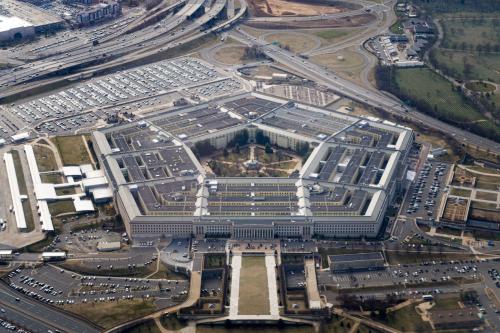In his speech to the Congress and the nation 10 days ago, President Bush wisely announced the creation of a new Cabinet-level office devoted to homeland security and named Gov. Tom Ridge of Pennsylvania to lead it. With his military background, wide experience and highly regarded political and personal skills, he is a promising choice.
But what should Ridge do with his new job?
Most discussion of the president’s proposal to date has focused on process and personalities rather than substance. Now that we have a Cabinet-level official, he needs an agenda for action.
Some priorities are obvious. Most notably, the country needs an overhaul of airport and airplane security. But other, equally pressing measures to defend the American homeland should be adopted. Lawmakers should remember that most will not be funded out of the defense budget:
Revitalizing the Coast Guard. The U.S. Coast Guard, which usually employs about 10 percent of its fleet to guard U.S. ports, is now devoting two-thirds of its deployed ships to that purpose.
Making matters worse, its fleet is aging badly, and its current shipbuilding plan would take half a century to complete. A more rapid plan, together with a modest expansion in the size of the Coast Guard fleet, would cost $750 million to $1 billion a year.
Improving building security. Most buildings in large cities are vulnerable not only to the extreme tactics of Sept. 11, but also to the more mundane truck bomb as well as to chemical and biological agents that could be dispersed through their air-circulation systems.
Federal subsidies should be provided to encourage builders and owners to place air intakes in relatively secure locations above street level, to use shatterproof glass in the lower floors of prominent buildings, and to limit or monitor below-ground parking in large structures.
Once affordable and relatively unobtrusive detectors for chemical and biological agents are available, it would also make sense to deploy them in key buildings as well as subways and certain other public facilities. These efforts would also require hundreds of millions of dollars a year.
Toughening customs inspections. At present, considerably less than 10 percent of all containers entering the United States are checked for contraband or weapons.
Following the suggestion of Steve Flynn, a Coast Guard officer and scholar now at the Council on Foreign Relations in New York, the government should try to improve on that figure by establishing a database for real-time tracking of containers headed toward the United States.
The idea would require cooperation from the shipping industry. Companies that participated, and showed they were serious about monitoring their own cargo, would not have to wait in long lines when bringing merchandise into the United States. Customs agents could then focus their limited resources on monitoring and inspecting the shipments of suspicious or unknown companies. This idea should be relatively inexpensive, costing no more than $100 million to $200 million annually.
Improving cyber-security. The nation’s computer systems, especially those not run by the Department of Defense, remain too vulnerable.
The government should take several types of steps. It should establish a permanent office—modeled partly on the temporary office established to cope with Y2K concerns—to help reconstitute computer networks after an attack. It should also create electronic systems to detect hacking efforts in real time, if possible. Finally, it should create graduate scholarships for students to study and improve cyber-security techniques. These steps together would cost about $200 million a year.
Making further preparations against chemical-biological attack. Under the Nunn-Lugar-Domenici program, local police departments, fire departments and hospitals in large cities have been receiving response training as well as some protective equipment against a possible terrorist attack using chemical or biological agents. Funding was also provided to stockpile key vaccines and antibiotics to counter diseases such as anthrax and smallpox.
However, most of the Nunn-Lugar-Domenici efforts have focused on the chemical-weapons threat more than the biological-agent danger. To redress this situation, health research and development efforts should be increased substantially to develop vaccines and antibiotics for a broader array of agents and to explore methods for strengthening the human body’s immune system.
Funding for tracking infectious diseases worldwide could also benefit from greater resources, partly to increase “syndrome surveillance” that can alert experts to the possible outbreak of a disease in its early stages. Such efforts should link doctors to public health providers more effectively than has been the case. Together these measures would have a yearly price tag approaching $1 billion.
This list of unmet security needs is far from comprehensive.
For example, to help ensure that the next terrorist attack does not involve weapons of mass destruction, cooperative threat reduction programs should be expanded to improve the security of Russia’s loose nuclear materials and to wean more of its scientists away from weapons work.
And the Pentagon should go beyond its emphasis on ballistic missile defense to focus as well on cruise missiles, simpler devices that could be launched from a ship outside U.S. territorial waters.
Moreover, Ridge certainly needs a “red team” of individuals paid to think like terrorists and uncover additional vulnerabilities in the nation’s infrastructure. But the above initiatives would not be a bad place to start.
The Brookings Institution is committed to quality, independence, and impact.
We are supported by a diverse array of funders. In line with our values and policies, each Brookings publication represents the sole views of its author(s).



Commentary
Op-edAction Plan for Defending the Homeland
September 30, 2001